#bernard zitzermann
Explore tagged Tumblr posts
Text

A Dream Longer Than the Night (Un rêve plus long que la nuit), Niki De Saint Phalle (1976)
#Niki De Saint Phalle#Laura Duke Condominas#Laurence Bourqui#Laurent Condomidas#Jean Tinguely#Marina Karella#Rico Weber#Humbert Balsan#Bernhard Luginbühl#Henri Holstein#Daniel Spoerri#Roberto Gueho#Bernard Zitzermann#Peter Whitehead#Dominique Cazeneuve#Nicole Garnier#1976#woman director
15 notes
·
View notes
Text





The Man Who Sleeps, Bernard Queysanne (1974)
62 notes
·
View notes
Photo
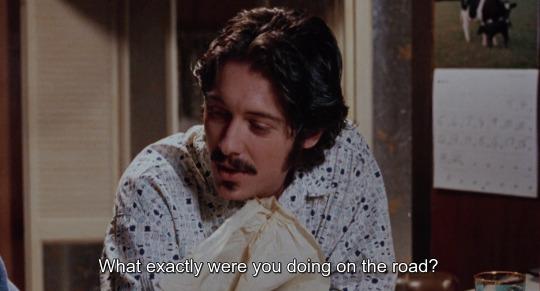

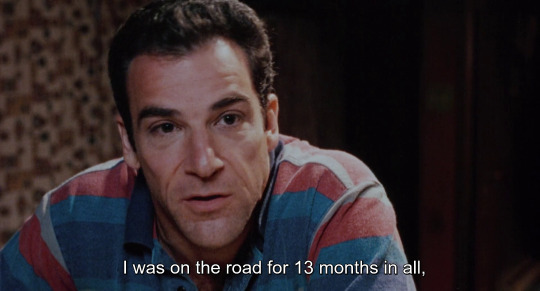


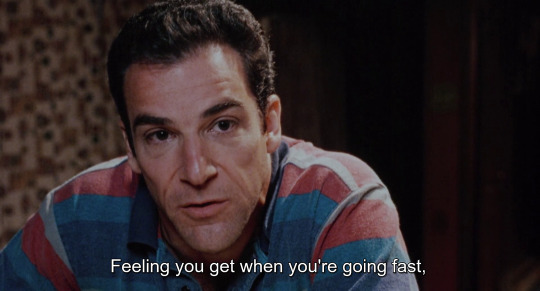

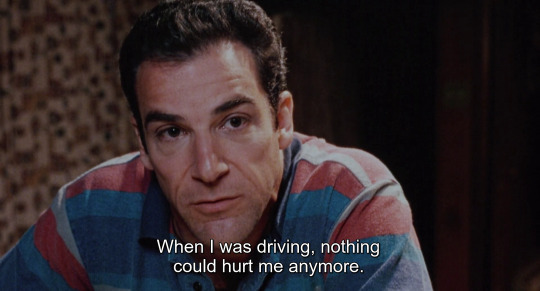
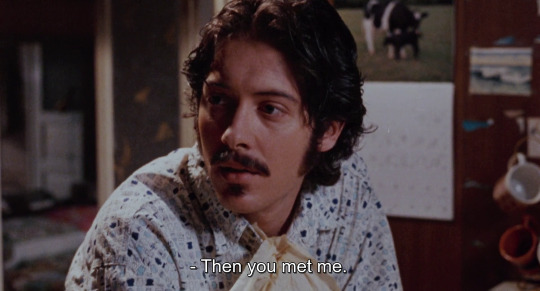
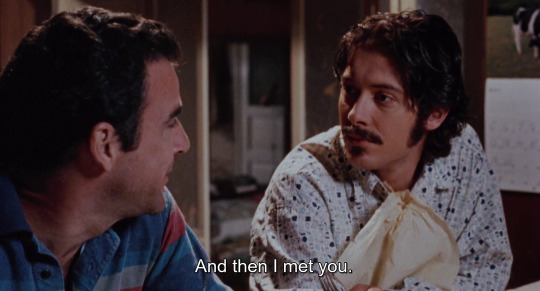
The Music of Chance (Philip Haas, 1993).
#the music of chance#philip haas#belinda haas#mandy patinkin#james spader#bernard zitzermann#hugo luczyc-wyhowski#ruth ammon#christy belt#rudy dillon#paul auster
102 notes
·
View notes
Photo




no man’s land (fr/swi/uk/wger, tanner 85)
14 notes
·
View notes
Photo

la cérémonie (1995) dir. claude charbol, cinematography by bernard zitzermann
9 notes
·
View notes
Photo





PARİS’E DÖNÜYOR ve odana, sessizliğine kavuşuyorsun. Su damlası, kalabalıklar, sokaklar, köprüler; tavan, pembe plastik leğen; dar sedir. Yüzünü oluşturan çizgilerin yansıdığı çatlak ayna.

Odan dünyanın merkezi. Bu in, kokunu hep saklayan bu izbe çatı katı; çatlaklarını, kabarmalarını, lekelerini, süslerini yüz bin kez saydığın bu tavan; bu küçücük, oyuncağa benzeyen lavabo; bu leğen; bu pencere; üstündeki her çiçeği, her sapı, her girişik süslemeyi tanıdığın, neredeyse şaşmaz kusursuzlukta basılmış olmalarına rağmen, birbirlerine tam olarak benzemediklerini bir tek senin söyleyebileceğin süsleriyle bu duvar kağıdı; tekrar tekrar okuduğun ve tekrar tekrar okuyacağın bu gazeteler; yüzünü ancak üç parçaya bölünmüş, hafifçe üst üste binen, eşit olmayan yüzeyler halinde yansıtan bu ayna, senin alışkanlık sayesinde alnındaki tek göz müsveddesini, yarık burnunu, sürekli çarpık duran ağzını artık neredeyse görmezden gelebildiğin, eski bir kılıç ya da kırbaç darbesinin hemen hemen silik ve unutulmuş izine benzeyen Y şeklindeki bir çizikten başka bir şey yansıtmayan bu çatlak ayna; bu dizilmiş kitaplar; bu dilimli radyatör; üstüne narçiçeği renginden pegamoid bir kılıf geçirilmiş bavul biçimindeki bu pikap: İşte krallığının başı ve sonu; seni dünyaya bağlayan tek şey olan daima mevcut dost ya da düşman sesler, ortak merkezli çemberler halinde çevreliyor bu krallığı; sahanlıktaki musluktan damlayan su, komşunun gürültüleri, boğazını temizlemesi, açıp kapadığı çekmeceler, öksürük nöbetleri, çaydanlığının ıslığı, Saint-Honorê Sokağı’nın gürültüleri, şehrin dinmeyen uğultusu. Çok uzaktan, bir itfaiye aracının sireni sana doğru yaklaşıp uzaklaşıyor, tekrar yaklaşıyor sanki. Saint-Honorê ile Pyramides sokaklarının kavşağında, fren seslerinin, dur-kalkların, hızlanmaların düzenli dönüşümü, neredeyse o ısrarlı su damlasının, Saint – Roch’un çanlarının şaşmazlığıyla ritim veriyor zamana.

Çalar saatin uzun zamandır beşi çeyrek geçeyi gösteriyor. Sen burada yokken durmuş olmalı, sen de kurmayı ihmal ettin. Odandaki sessizliğe zaman artık girmiyor, ama sürekli çevreliyor seni, bakmamazlık edebileceğin bir çalar saatin akrebiyle yelkovanından daha ısrarlı, daha mevcut ama yine de biraz çarpık, bozuk, şüpheli: Zaman geçiyor, ama sen saati bilmiyorsun, Saint – Roch’un çanı ne çeyreği, ne buçuğu, ne de üç çeyreği ayırt ediyor, Saint-Honorê ile Pyramides sokaklarının kavşağındaki trafik ışıkları her dakika değişmiyor, su damlası her saniye düşmüyor. Saat on, belki de on bir, çünkü doğru duyduğundan nasıl emin olabilirsin ki, geç oldu, henüz erken, gün doğuyor, gece oluyor, sesler tam olarak kesilmiyor hiç, zaman bütünüyle hiç durmuyor, görünmez olsa bile: sessizlik duvarındaki ufacık gedik, iki damla arasında yavaşlamış, unutulmuş, neredeyse yüreğinin atışlarıyla karışmış mırıltı.

Odan ıssız adaların en güzeli, Paris ise kimsenin hiçbir zaman aşamadığı bir çöl. Bu dinginlikten, bu uykudan, bu sessizlikten, bu uyuşukluktan başka bir şeye ihtiyacın yok. Günler başlasın, günler bitsin, ağzın kapansın, ensendeki, çene kemiğindeki, çenendeki kaslar bütünüyle gevşesin, sadece ve sadece göğüs kafesinin inip kalkması, yüreğinin atışları tanıklık etsin hâlâ sabırla varkalmana.

Artık hiçbir şey istememek. Bekleyecek bir şey kalmayana kadar beklemek. Avare dolaşmak, uyumak. Kalabalıkların, sokakların seni sürüklemesine seyirci kalmak. Su oluklarını, parmaklıkları, kıyılar boyunca akan suyu izlemek. Rıhtımlar boyunca gitmek, duvarların dibinden yürümek. Zaman kaybetmek. Tüm tasarılardan, sabırsızlıktan kurtulmak. Arzulamayan, gücenmeyen, isyan etmeyen biri olmak.

Önünde, zamanlar boyunca, kıpırtısız, bunalımsız, kargaşasız bir yaşam olacak: ne bir pürüz, ne bir dengesizlik. Dakikadan dakikaya, saatten saate, günden güne, mevsimden mevsime, hiç bitmeyecek olan bir şey başlayacak: bitkisel yaşamın, iptal edilmiş yaşamın. Georges Perec, Uyuyan Adam s.37-39 Fotoğraflar: Bernard Queysanne’nin Perec’in romanından uyarladığı 1974 yapımı, “The Man Who Sleeps” (Uyuyan Adam), filminden, (Jacques Spiesser).
#georges perec#uyuyan adam#un homme qui dort#bernard queysanne#jacques spiesser#the man who sleeps#bernard zitzermann#sosi dolanoğlu#a man asleep
40 notes
·
View notes
Photo

La Cérémonie / « Ça va », dit une bonne.
#Cinéma#La Cérémonie#Claude Chabrol#Bernard Zitzermann#1995#Sandrine Bonnaire#Isabelle Huppert#Jacqueline Bisset#Jean-Pierre Cassel#Virginie Ledoyen#Valentin Merlet
1 note
·
View note
Text
youtube
Un hombre que duerme (Un homme qui dort, 1974)
Dirección: Bernard Queysanne
Guión: Georges Perec, basado en su novela homónima.
Fotografía: Bernard Zitzermann
Reparto: Jacques Spiesser, Ludmila Mikaël.
9 notes
·
View notes
Photo

Betty, Claude Chabrol (1992)
Cinematography: Bernard Zitzermann | France
4 notes
·
View notes
Text
“ANGELS & INSECTS” (1995) Review

“ANGELS & INSECTS” (1995) Review
I never thought I would come around to writing this review. I have seen the 1995 movie, “ANGELS & INSECTS” a good number of times during the past five years. Yet, I never got around to posting a review of this movie, until recently. Why? I have not the foggiest idea. Nor do I have any idea why I had finally decided to write that review.
Based upon A.S. Byatt’s 1992 novella called “Morpho Eugenia”, “ANGELS & INSECTS”tells the story of a poor naturalist named William Adamson, who returns home to Victorian England after having spent years studying the natural wildlife – especially insects – in the Amazon Basin. Despite losing all of his possession during a shipwreck, he manages to befriend a baronet named Sir Harald Alabaster, who is also an amateur insect collector and botanist. The latter hires William to catalog his specimen collection and assist his younger children’s governess the natural sciences.
William eventually falls for Sir Harald’s oldest daughter, Eugenia, who is mourning the suicide of her fiance. Both of them eventually become emotionally involved and decide to marry. Much to William’s surprise, both Sir Harald and Lady Alabaster seems encouraging of the match. The only member of the Alabaster family who is against their upcoming wedding is Sir Harald’s eldest child, the arrogant Edgar. Not only is the latter close to Eugenia, he believes that William is unworthy of his sister’s hand, due to having a working-class background. The marriage between William and Eugenia seemed to be a happily lustful one that produces five children (among them two sets of twins). But Eugenia’s hot and cold control over their sex life, a constantly hostile Edgar, William’s growing friendship to Lady Alabaster’s companion Matilda “Matty” Crompton, and William’s own disenchantment over his role as Sir Harald’s official assistant brings their marriage to a head after several years of marriage.
The film adaptation of Byatt’s novella seemed to be the brainchild of Philip and Belinda Haas. Both worked on the film’s screenplay, while Philip also served as the film’s director and Belinda served as both co-producer (there are three others) and film editor. From my perusal of many period drama blogs, I get the feeling that “ANGELS & INSECTS” is not very popular with many of the genre’s fans. On the other hand, many literary and film critics seemed to have a very high regard for it. Despite my love for the usual romantic costume drama, I must admit that my opinions of the 1995 film falls with the latter group. It is simply too well made and too fascinating for me to overlook.
There were times I could not tell whether “ANGELS & INSECTS” is some look at the age of Victorian science exploration, the close study of an upper-class 19th century family, or a lurid tale morality. Now that I realize it, the movie is probably an amalgamation of them all, wrapped around this view on Darwinism and breeding – in regard to both the insect world and humans. The topic of breeding seemed to seep into the screenplay in many scenes. Some of them come to mind – Sir Harald and Edgar’s debate on the breeding of horses and other animals, William and Eugenia’s second encounter with moths in the manor’s conservatory, Sir Harald’s despairing rant on his declining usefulness within his own household, the reason behind Edgar’s hostility toward William, and the visual comparisons between the bees and the inhabitants of the Alabaster estate, with Lady Alabaster serving as some metaphor for an aging Queen bee on her last legs. The metaphor of the Queen bee is extended further into Eugenia. Not only does she assume her mother’s role as mistress of the house following the latter’s death; but like Lady Alabaster before her, gives birth to a growing number of blond-haired children. If a person has never seen “ANGELS AND INSECTS” before, he or she could follow both the script and cinematographer Bernard Zitzerman’s shots carefully to detect the clues that hint the cloistered degeneracy that seemed to unconsciously permeate the Alabaster household.
I cannot deny that “ANGELS & INSECTS” is a gorgeous film to behold. Philip and Belinda Haas, along with the film’s other producers did an excellent job in creating a visually stunning film with a bold and colorful look. Cinematographer Bernard Zitzermann, along with production designer Jennifer Kernke and Alison Riva’s art direction provided great contributions to the film’s visual style. But in my opinion, Paul Brown’s Academy Award nominated costume designs not only conveyed the film’s colorful visual style more than anything else, but also properly reflected the fashion styles of the early 1860s for women – including the growing penchant for deep, solid colors – as shown below:


Adding to the movie’s rich atmosphere was Alexander Balanescu’s memorable score. I thought the composer did an excellent job of reflecting both the movie’s elegant setting and its passionate, yet lurid story.
As much as I enjoyed and admired “ANGELS & INSECTS”, I believe it had its flaws. I understand why Philip Haas had opened the movie with shots of William Adamson socializing with inhabitants of the Amazonian jungle, juxtaposing with the Alabaster ball given in his honor. Is it just me or did Haas use white – probably British – actors to portray Amazonian natives? I hope I am wrong, but I fear otherwise. I also feel that the movie was marred by a slow pacing that nearly crawled to a halt. I cannot help but wonder if Haas felt insecure by the project he and his wife had embarked upon, considering that “ANGELS & INSECTS” was his second motion picture after many years as a documentarian. Or perhaps he got caught up in his own roots as a documentarian, due to his heavy emphasis on the natural world being studied by William, Matty and the younger Alabaster children. In a way, I have to thank Balanescu’s score for keeping me awake during those scenes that seemed to drag.
I cannot deny that the movie featured some top-notch and subtle performances. Mark Rylance, who has a sterling reputation as a stage actor, gave such a quiet and superb performance that his reputation has extended to film, resulting in a Best Actor Oscar over a year ago. Kristin Scott-Thomas was equally superb as the Matty Crompton, Lady Alabaster’s very observant companion, who shared William’s interests in natural sciences. I have no idea what reputation Patsy Kensit has as an actress, but I certainly believe she gave an excellent performance as William’s beautiful and aristocratic wife, Eugenia Alabaster, whose hot and cold attitude toward her husband kept him puzzled. Jeremy Kemp gave one of his more complex and entertaining performances as William’s father-in-law, the amateur scientist Sir Harald Alabaster. Douglas Henshall had a difficult job in portraying the bullying Edgar Alabaster, who seemed to view William as both beneath contempt and something of a threat to his views of the world. The movie also featured solid performances from the likes of Anna Massey, Saskia Wickham, Chris Larkin, Clare Redman and Annette Badlands.
Some fans of period drama might be taken aback by the graphic sexuality featured in the film, along with the story’s lurid topic. And director Philip Haas’ pacing might be a bit hard to accept. But I feel that enduring all of this might be worth the trouble. Philip and Belinda Haas, along with the crew and a cast led by Mark Rylance, Kristin Scott-Thomas and Patsy Kensit did an excellent in re-creating A.S. Byatt’s tale on the screen, and creating a first-rate movie in the end.
#angels & insects#a.s. byatt#philip haas#belinda haas#angels & insects 1995#mark rylance#kristin scott thomas#patsy kensit#douglas henshall#chris larkin#saskia wickham#clare redman#anna massey#annette badlands#jeremy kemp#victorian age
4 notes
·
View notes
Text
PONT-SAINT-ESPRIT Sorties et bons plans, du 23 au 25 février 2018 - Objectif Gard
Objectif Gard
PONT-SAINT-ESPRIT Sorties et bons plans, du 23 au 25 février 2018 Objectif Gard Objectif Gard fait le point sur les animations de ce week-end à Pont-Saint-Esprit ! Vendredi 23 février – 20h30. Soirée Robert Desnos en hommage à Bernard Zitzermann. Bernard Zitzermann était un homme de cinéma, directeur de la photographie, il a ...
Lire la suite bons plans - Google Actualités
0 notes
Text




The Man Who Sleeps, Bernard Queysanne (1974)
31 notes
·
View notes
Text
La Banquière de Francis Girod (1980) #MrCinema 198
Redécouvrez la bande-annonce du film La Banquière ponctuée des secrets de tournage et d'anecdotes sur celui-ci. ■ Abonnez-vous sur Youtube ► https://goo.gl/dck70g ■ Suivez-moi sur Twitter ► https://goo.gl/IMyExb ■ Rejoignez-moi sur Facebook ► https://goo.gl/eWnGLq 🎥 La Banquière est un film français réalisé par Francis Girod, sorti en 1980. ✎ Emma Eckhert, issue d'un milieu modeste, réussit, dans l'entre-deux-guerres, une fulgurante ascension et se trouve à la tête d'une banque et d'un journal financier spécialisé dans l'épargne populaire. Elle sera victime d'une machination politico-financière… 🎬 Fiche technique ▬▬▬▬▬▬▬▬▬ Réalisateur : Francis Girod Scénario : Georges Conchon et Francis Girod, inspiré de la vie de Marthe Hanau Dialogues : Georges Conchon Photographie : Bernard Zitzermann Musique : Ennio Morricone Réalisateur seconde équipe : Régis Wargnier Producteur : Ariel Zeitoun Date de sortie : 27 août 1980 ☺ Distribution ▬▬▬▬▬▬▬ Romy Schneider, Marie-France Pisier, Claude Brasseur, Jean-Claude Brialy, Jean-Louis Trintignant, Daniel Auteuil, Thierry Lhermitte, Jean Carmet, Jacques Fabbri, Daniel Mesguich, Stéphane Raphaël, Arnaud Boisseau, Jean-Pierre Honoré, Claude Darget, Georges Conchon, Noëlle Chatelet, Jean Rigaux, Philippe Brizard, Eric Raphaël, Régine Deforges, Michel Delahaye, Hubert Deschamps, Jean-Michel Ribes, François-Régis Bastide, Jean-Paul Muel, Etienne Périer, Francis Claude, Jean Gorini, Alfred Willenbucher, Guillaume Hanoteau, Françoise Ulrich, Yves Brainville, Philippe Collin, Alan Adair, Isabelle Sadoyan, Véronique Genest ✎ Sources Wikipedia: http://ift.tt/2jyAssJ ✎ Sources AlloCiné: http://ift.tt/Z41qge https://youtu.be/OfT5XzgCiw4
0 notes
Photo

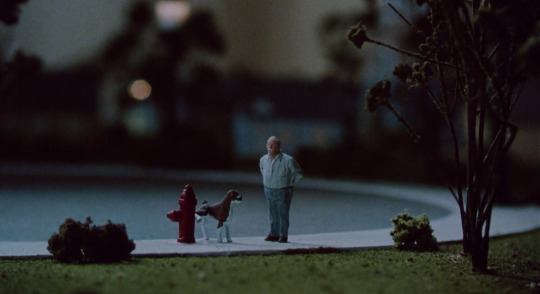
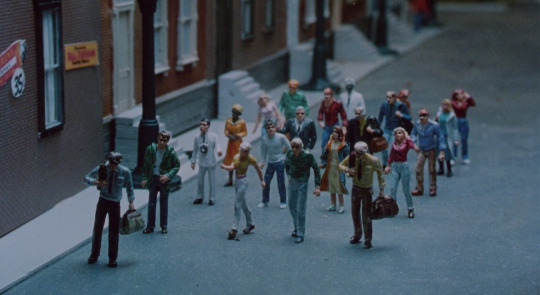
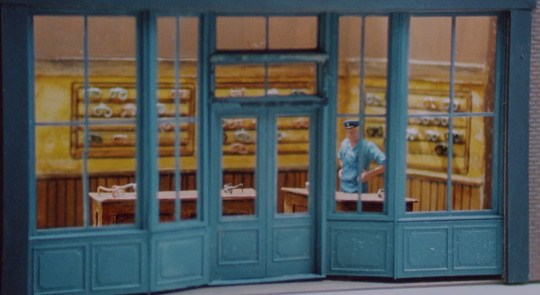




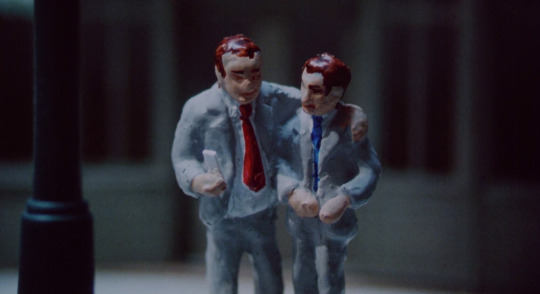

The Music of Chance (Philip Haas, 1993).
#the music of chance#philip haas#bernard zitzermann#belinda haas#hugo luczyc-wyhowski#ruth ammon#paul auster
65 notes
·
View notes
Photo





8 notes
·
View notes
Photo




La Cérémonie (1995)
Director: Claude Chabrol
Cinematography: Bernard Zitzermann
0 notes